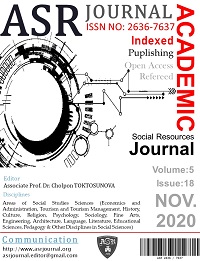Author :
Abstract
Bu çalışmanın temel amacı Fransız yazar Frédéric Beigbeder’in Romantik Egoist adlı eserini postmodern edebiyat bağlamında incelemektir. Postmodern kavramı “post” ön ekinden de anlaşılacağı üzere modernizmin sonrasını temsil eder. İlk olarak Amerika’da ortaya atılan bu kavram hakkında modernizme karşı mı yoksa modernizmin ardılı mı gibi farklı yorumlar mevcuttur. Nihayetinde postmodern kavramı tartışılırken modernizmden bağımsız düşünülemez. Postmodern yazarlar edebiyatın bütün mirasından yararlanan, farklı eserlere, metinlere ve yazarlara göndermeler yapan bir anlayışı savunurlar. İroni ve pastiş bu akımın özelliklerindendir. Modern yazarların aksine postmodern yazarlar eser boyunca anlatının bir kurmaca olduğunu okuyucuya hissettirirler. Bu çalışmada bir postmodern roman örneği olan bu eserin kısa bir özeti verildikten sonra postmodern yazar kimdir sorusuna cevap aranmıştır. Yazarın eserde kendisini yer yer bir roman karakteri olarak okuyucuya sunması eserini postmodern edebiyatın üstkurmaca tekniğini kullanarak yazdığını göstermektedir. Eserdeki bu tekniğin örnekleri incelendikten sonra postmodern edebiyat akımının faydalandığı alanlardan biri olan metinlerarasılık kavramının tanımlık, kolaj, alıntı ve gönderge özelliklerine değinilmiştir.
Keywords
Abstract
The main purpose of this study is to examine the French writer Frédéric Beigbeder's Romantic Egoist in the context of postmodern literature. The postmodern concept represents the end of modernization, as can be understood from the prefix "post". There are different interpretations of this concept, first introduced in America, whether it is opposed to modernism or successive of it. Ultimately, while the postmodern concept is being debated, it cannot be considered independently of modernism. Postmodern writers support an understanding that practises on all the legacy of literature, makes references to different works, texts and writers. Irony and pastische are characteristics of this movement. Contrary to modern writers, throughout the work postmodern writers make the reader feel that the story is fictional. In this study, after giving a brief summary of this work, which is an example of a postmodern novel, the answer to the question of who is postmodern writer is sought. The fact that the author sometimes presents himself as a novel character in the work shows that he wrote his work using the metafiction technique of postmodern literature. After examining the examples of this technique in the work, the features like epigraph, collage, quotation and reference of the concept of intertextuality, which is one of the areas used by the postmodern literary movement, are discussed.





